It Took Fujifilm Almost a Year to Develop the X100VI’s Stabilization Unit
![]()
Fujifilm has been at the forefront of sensor stabilization systems and the one found in the new X100VI is particularly impressive given the size constraints.
Over the last few years, Fujifilm has made great strides in its sensor stabilization systems, referred to as in-body image stabilization (IBIS) units. Its engineers have endeavored to make them not only more performant but also more compact, allowing them to work just as well — or better — than those found in other manufacturer’s cameras while requiring less space and energy.
The IBIS unit in the X100VI is Fujifilm’s most compact yet and is the culmination of research and refinement across multiple camera systems and took the company a long time to create.
Speaking to PetaPixel at its headquarters in Tokyo, Japan, Fujifilm’s Jun Watanabe, Product Planning Manager in its Professional Imaging Group, explained the challenges of compressing its IBIS technology.
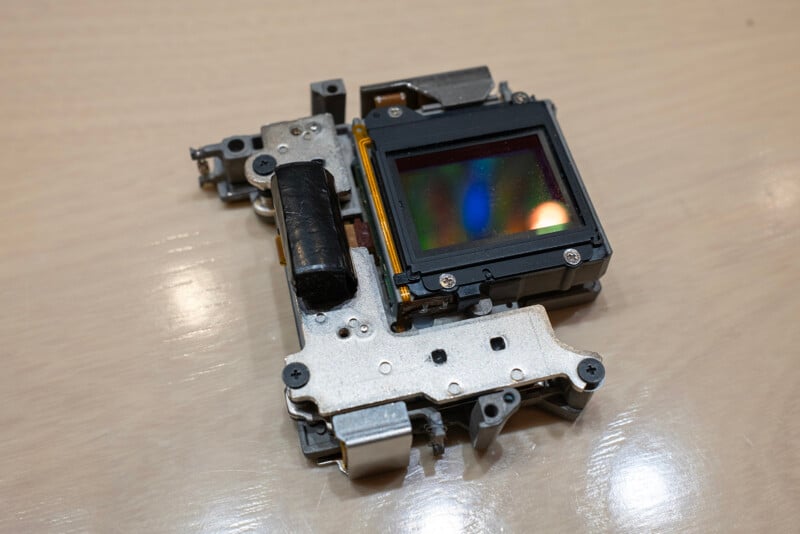
“This is our first IBIS system, which is for the X-H1,” Watanabe explained while holding the unit (seen above). “And around the same time we had the X100V, but we couldn’t install [that unit] into it because it was too big.”
He then pulled out a second IBIS unit (below), continuing: “And this is the latest unit for the X-T5, but we could also not install it for this [the X100VI] model. These previous units [had] depth priority.”
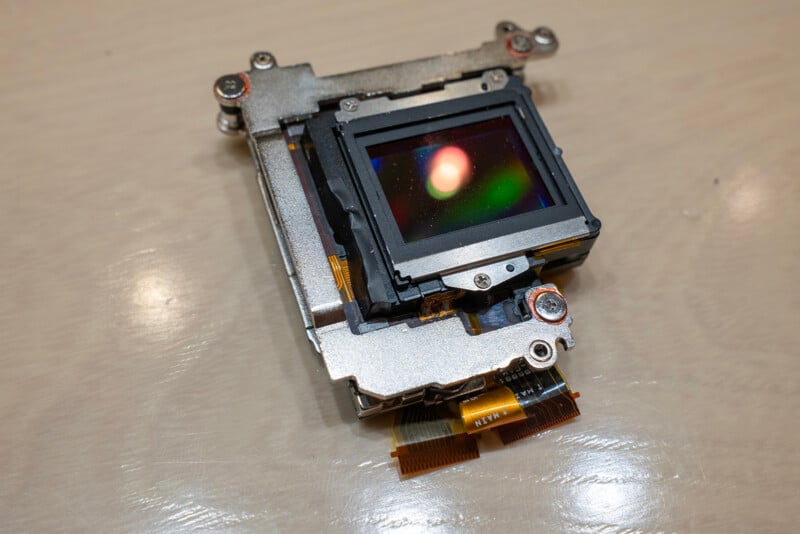
Watanabe explained that in order to add IBIS to the X100VI, the team had to change their priority to be less about depth and more about width. Since there is so much less depth to work with in the new compact camera, the team had to spread the size out differently.
Pointing to the arrangement of the unit, Watanabe notes that the team moved wiring that is normally found on the backside of IBIS units to the side and overlapped the cable as much as possible to make use of the limited space.
“We maximize that space as efficiently as possible and we reused this wire cable tension as much as possible to [reduce] power consumption as much as possible. That way we can install a smaller spring.”
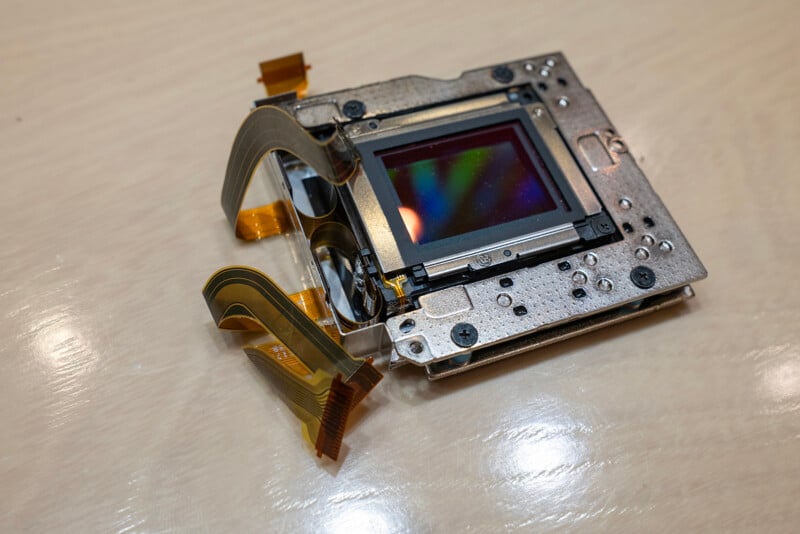
Because the wire cable is pushed into a narrow space, tension is exerted to hold the IBIS unit in the center position. By shifting the position of the magnetic spring, a force is generated to offset the tension, which enables the correction effect to be achieved with normal electric power.
Watanabe says that the development of this new, re-imagined IBIS unit took almost a year to perfect.
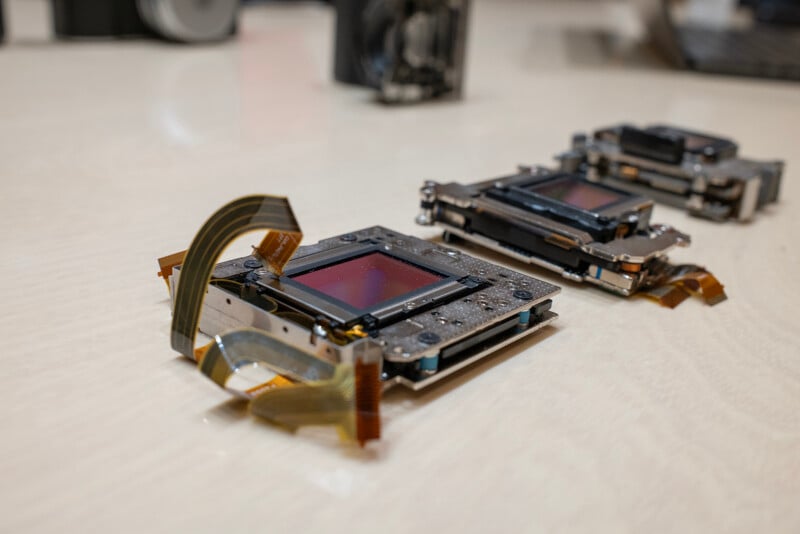
It’s important to note that while Fujifilm’s different camera teams overlap and work together, the demands of each camera are unique. It’s easy to think that Fujifilm would have simply borrowed the technology of the unit inside of the GFX100 II, for example, but that’s not what happened here.
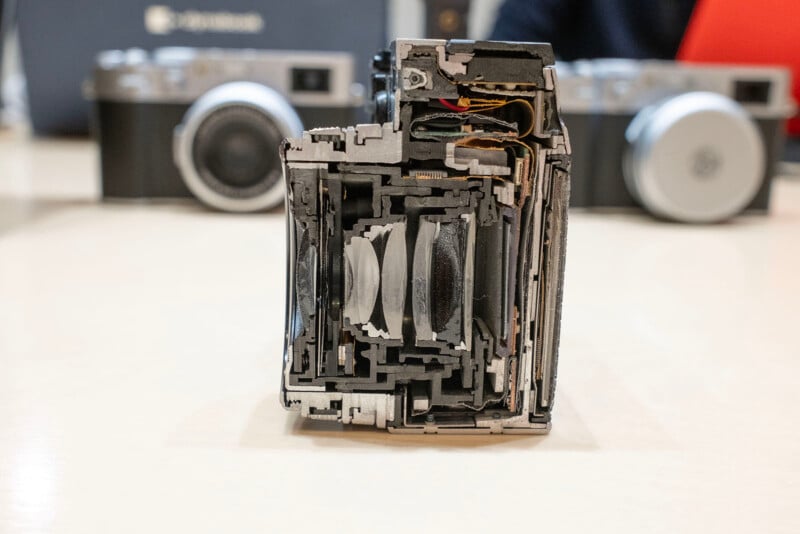
“It’s different [than the GFX100 II IBIS unit],” Yujiro Igarashi, Divisional Manager of Fujifilm’s Professional Imaging Group, explains.
“As you know, the X100VI doesn’t have a shutter inside of the body, [but rather] a leaf shutter in the lens. So the body has space along the long side, so that’s why we prioritize wider [design].”

Watanabe and Igarashi were joined by Makoto Oishi, Manager of the Product Planning Group in Fujifilm’s Professional Imaging Group, in the discussion, and the three of them explained that the original design of the X100V was created with the hope that the team would, at some point in the future, be able to add IBIS to the line.
“Originally we already had some plan to implement IBIS when we developed [the X100V],” Igarashi explained.
The team learned a lot about making compact IBIS units from their previous efforts, and while the X100VI unit had to be designed from the ground up, it was majorly informed by the X-T5, but also insights from other cameras. In short, it’s all one team that is working on IBIS for all of Fujifilm’s cameras.
“IBIS unit is developed by the same team. The same group. So the latest technology for the next XF or the latest of this technology for the next GFX model as well, and not only the hardware but also our kind of control algorithm. What we have, we shared both,” Watanabe says.
“The X100VI IBIS uses not only the gyro sensor but also the image sensor together, which improves the performance [of stabilization]. That’s actually technology from the GFX100 II.”
The Fujifilm X100VI is available for $1,600 and is shipping now.